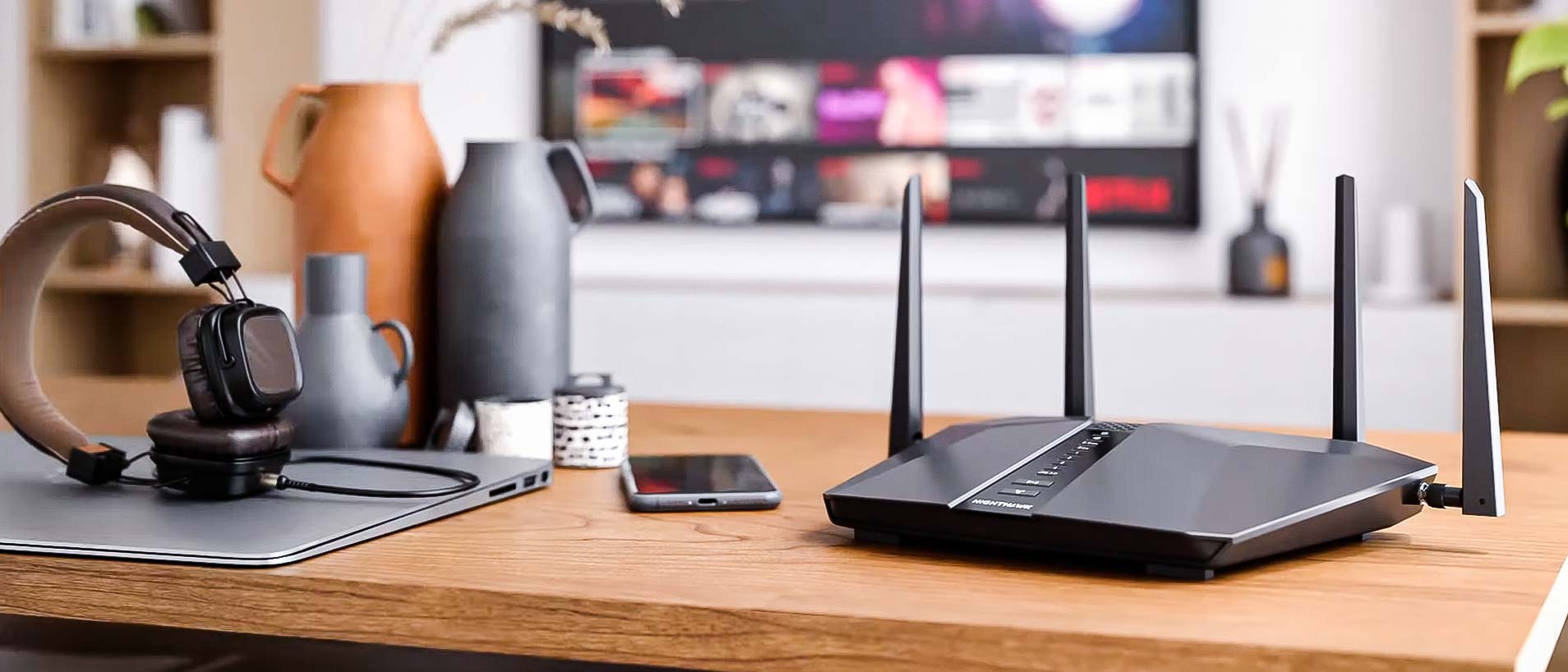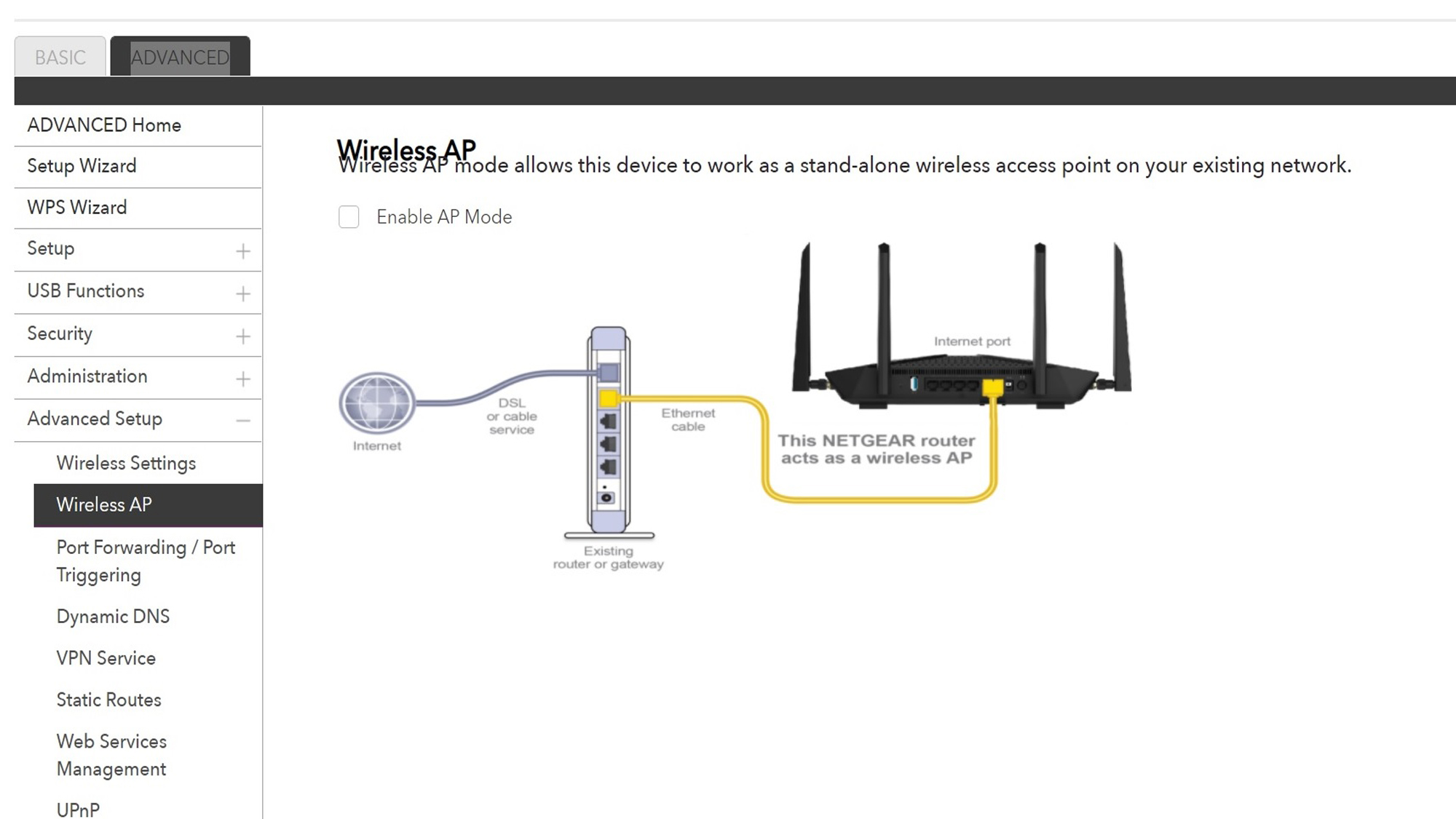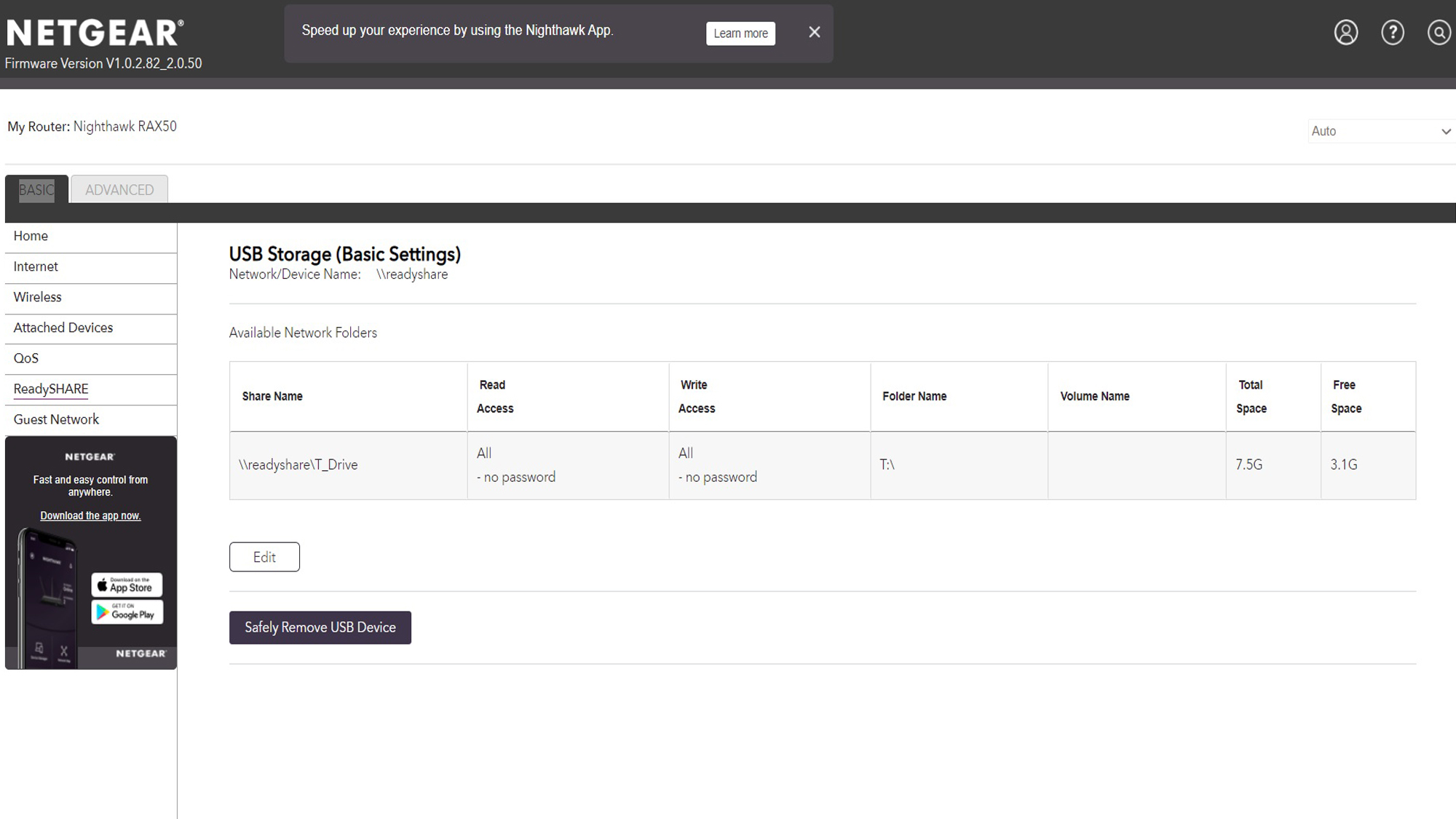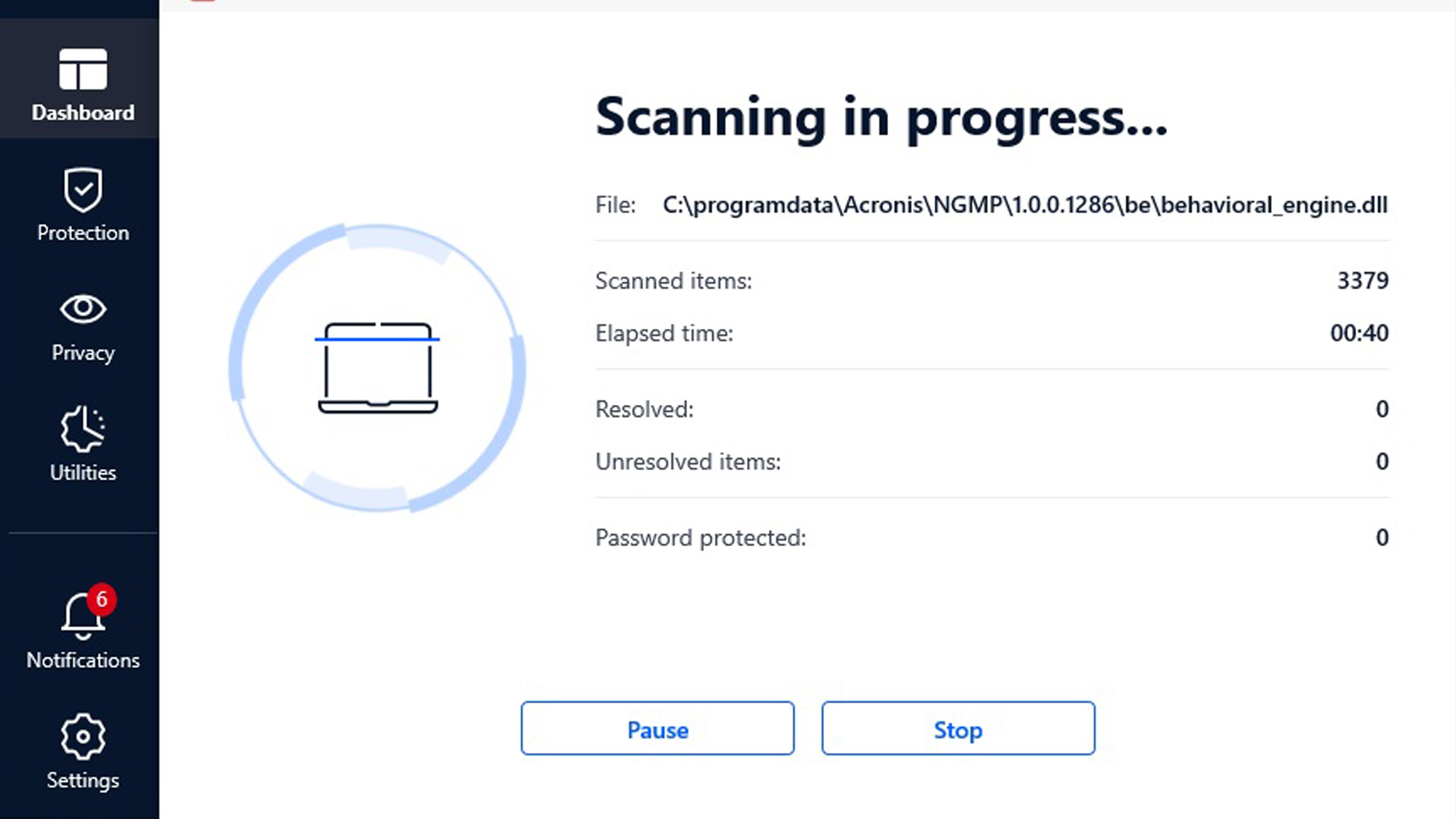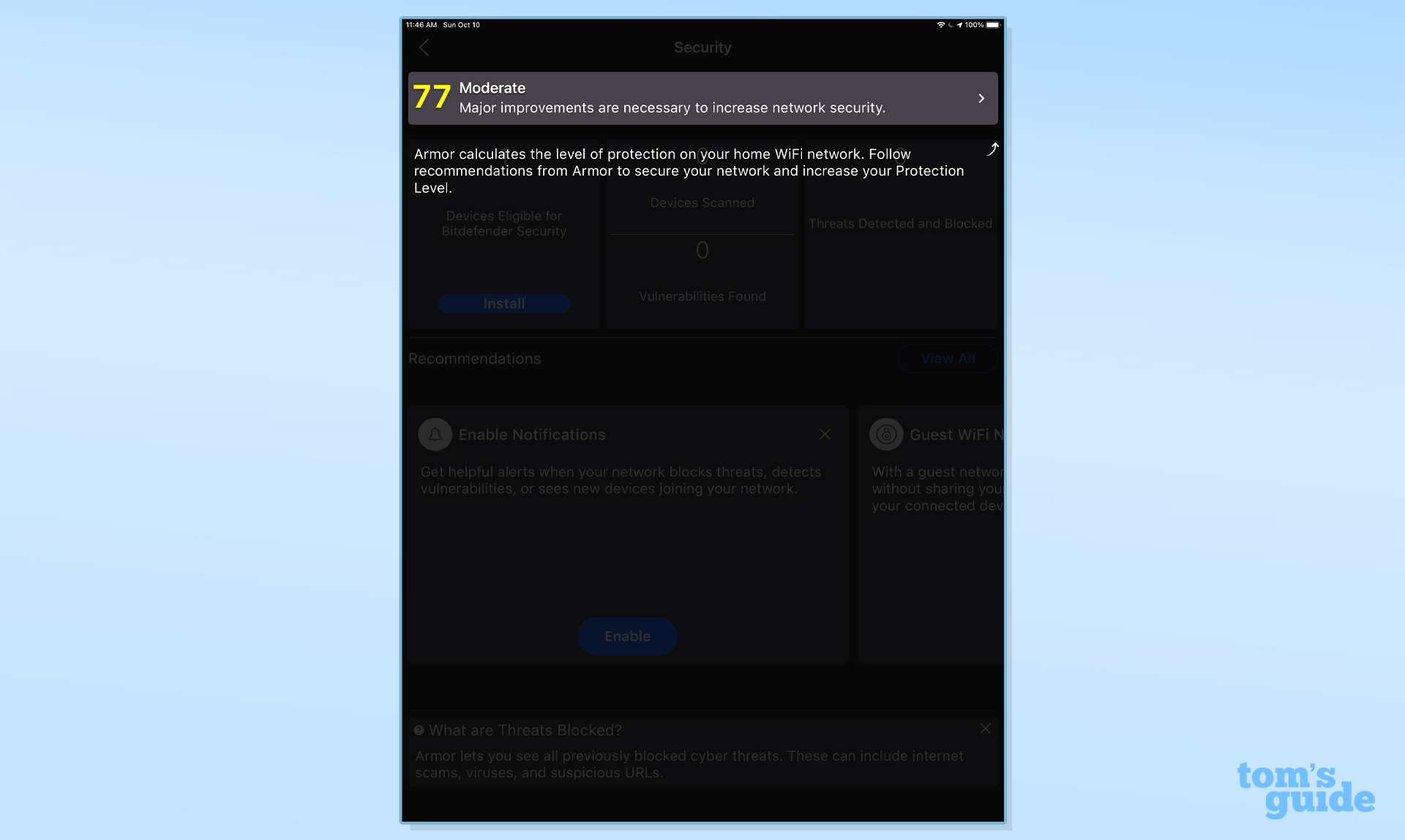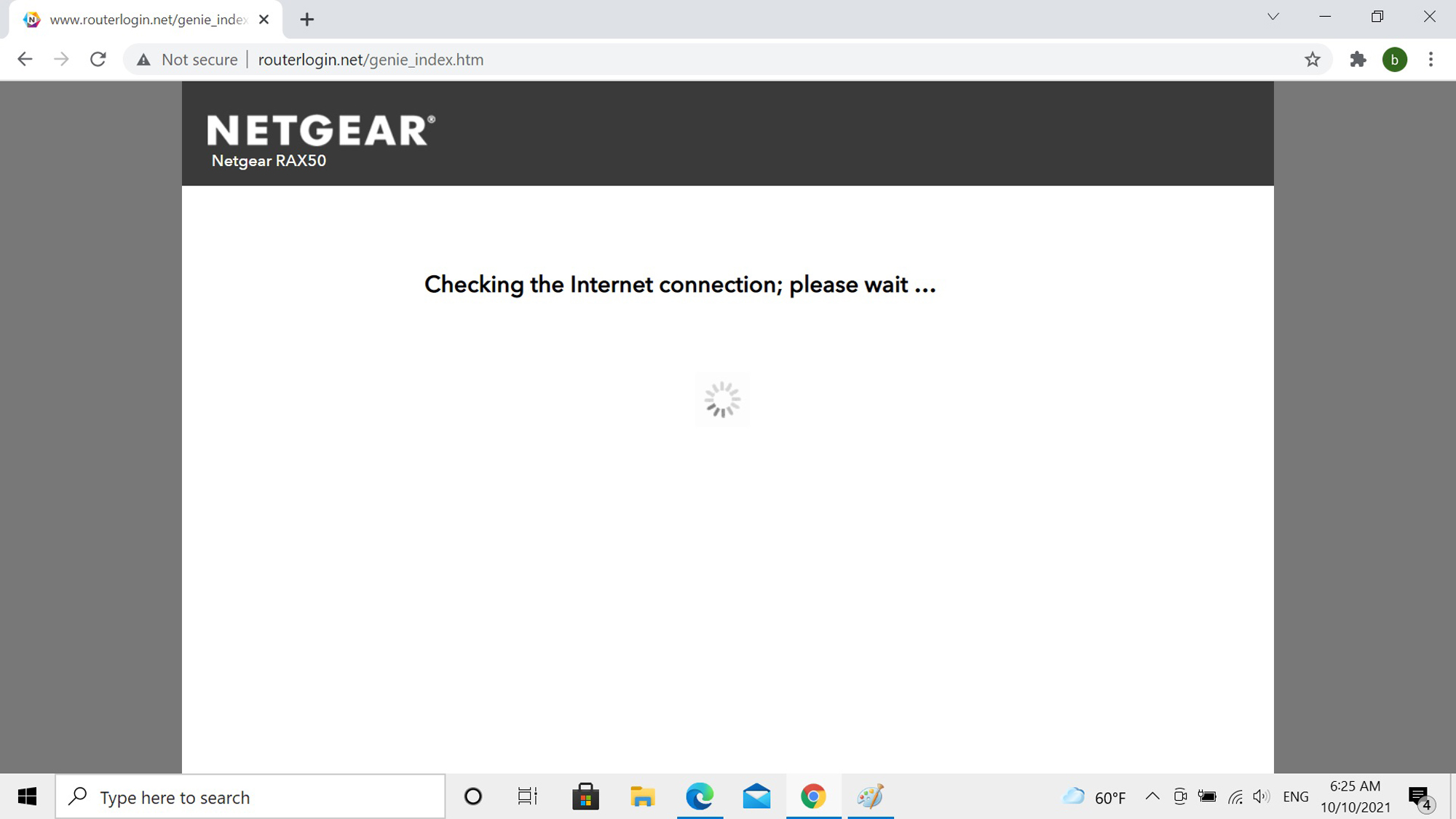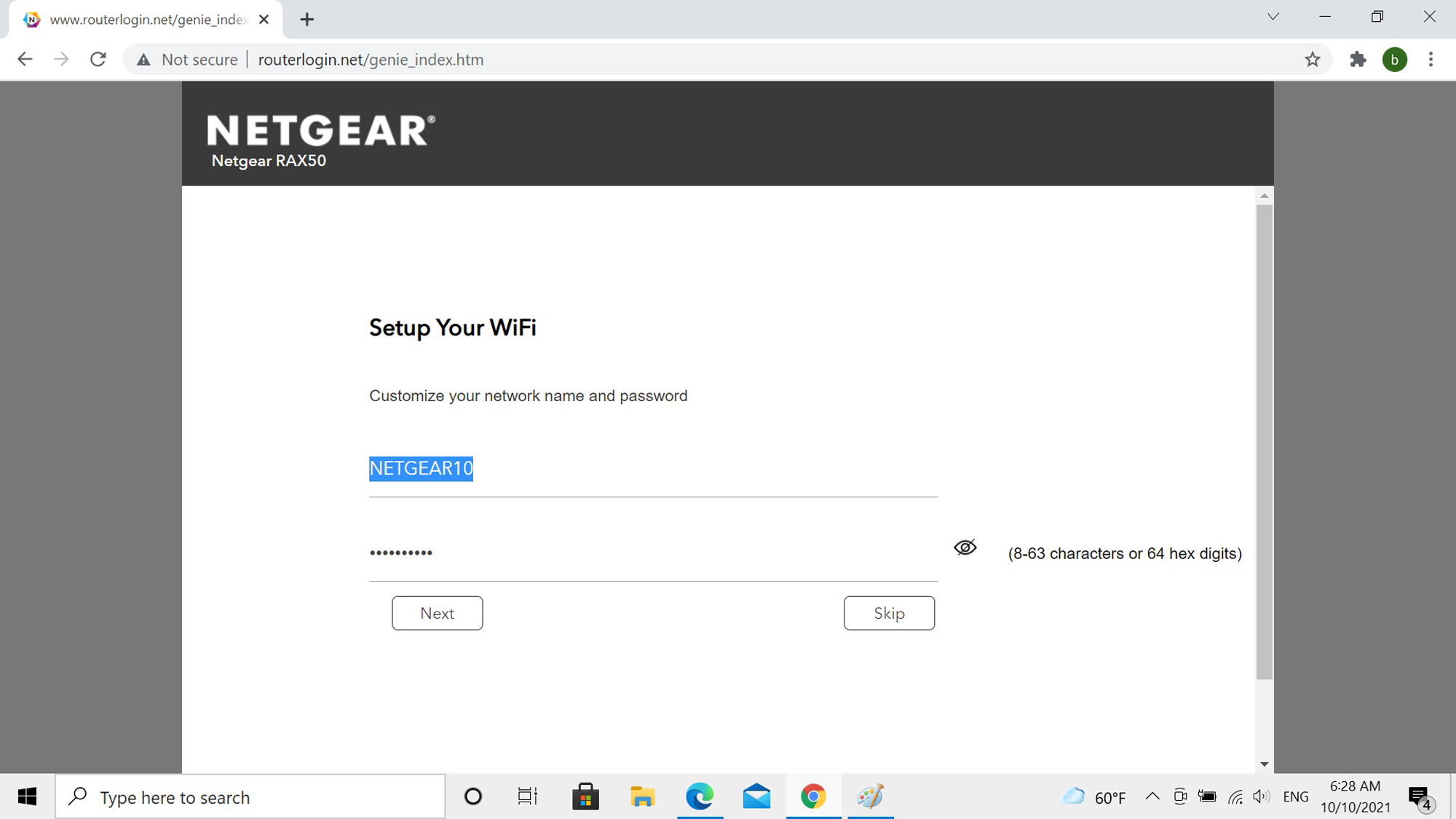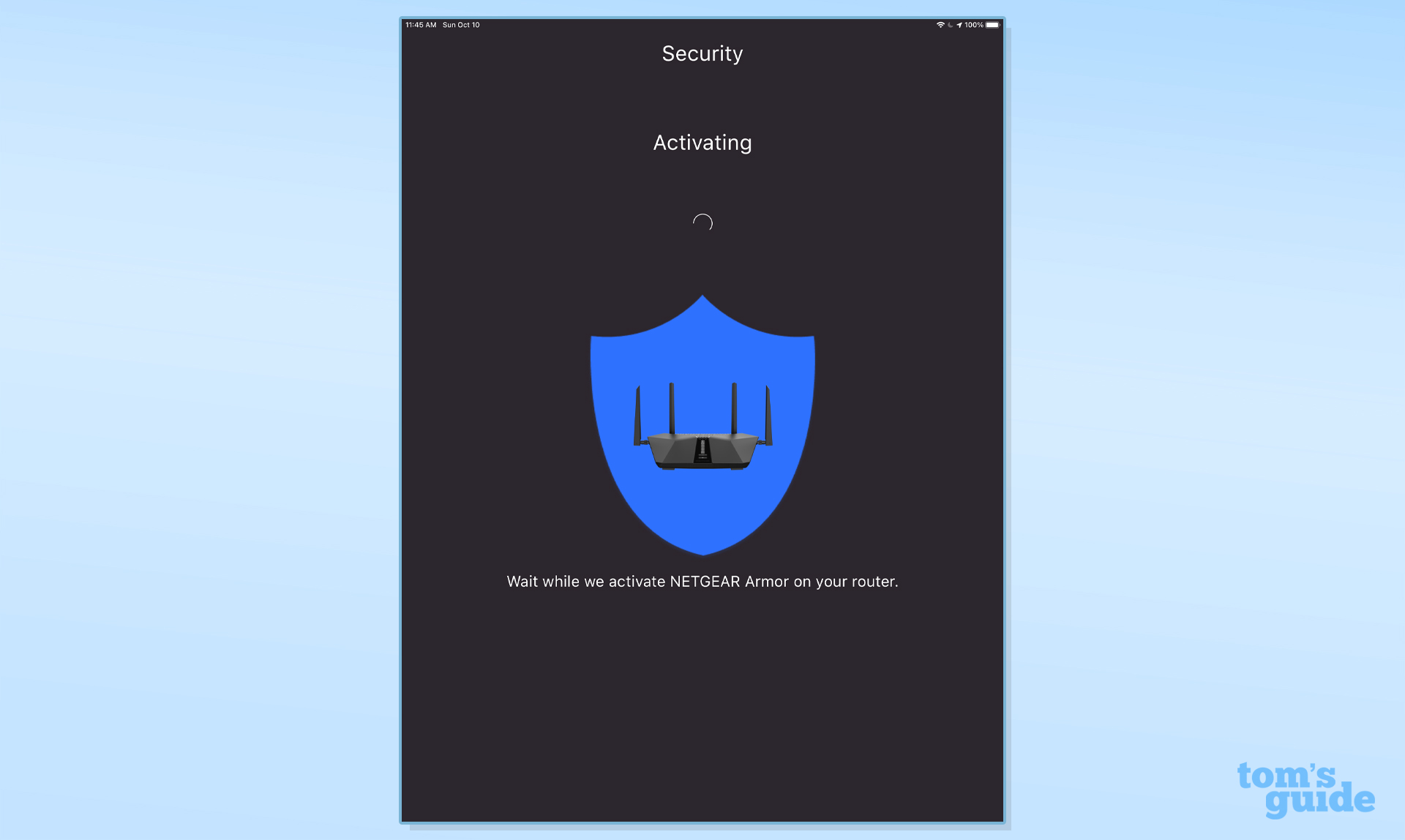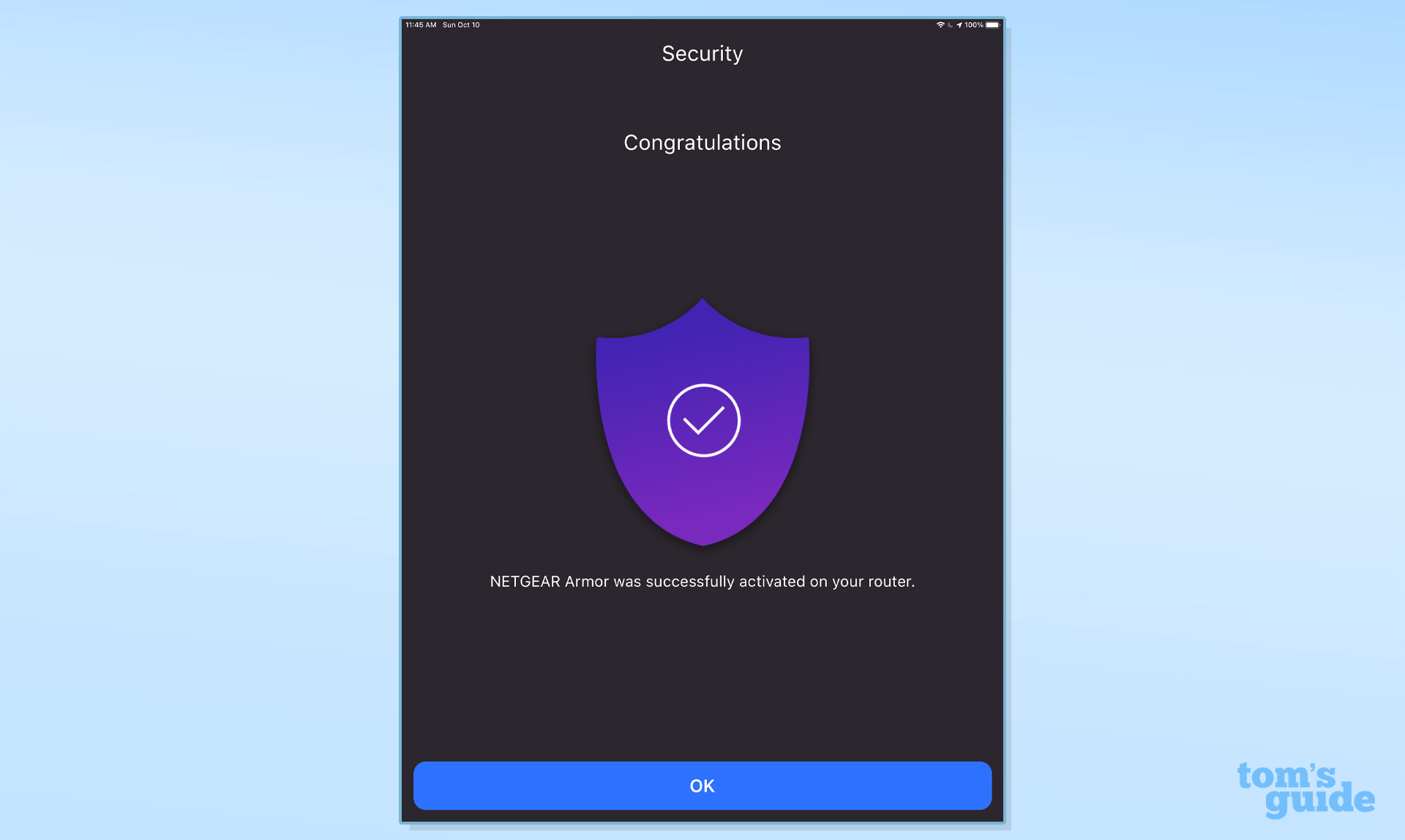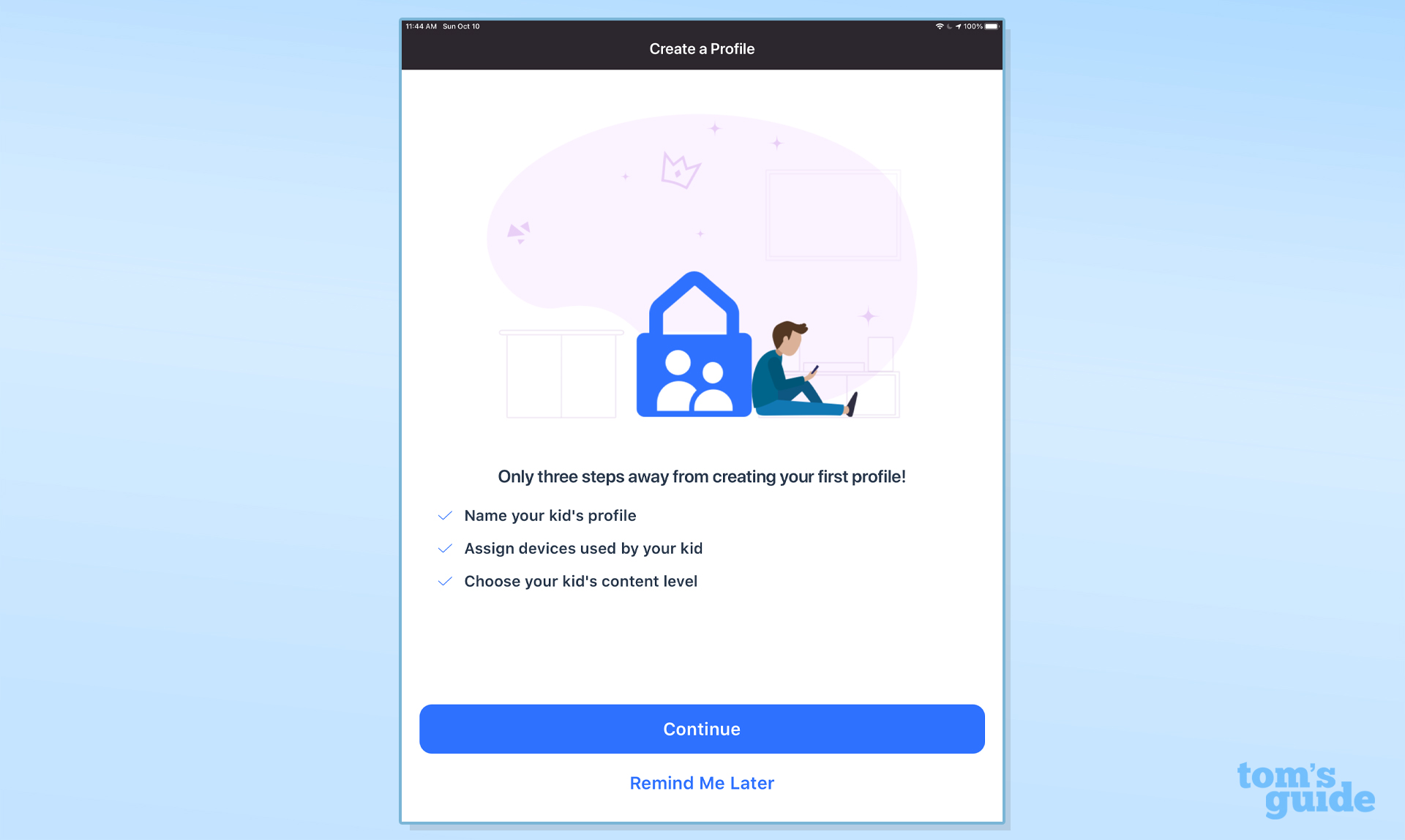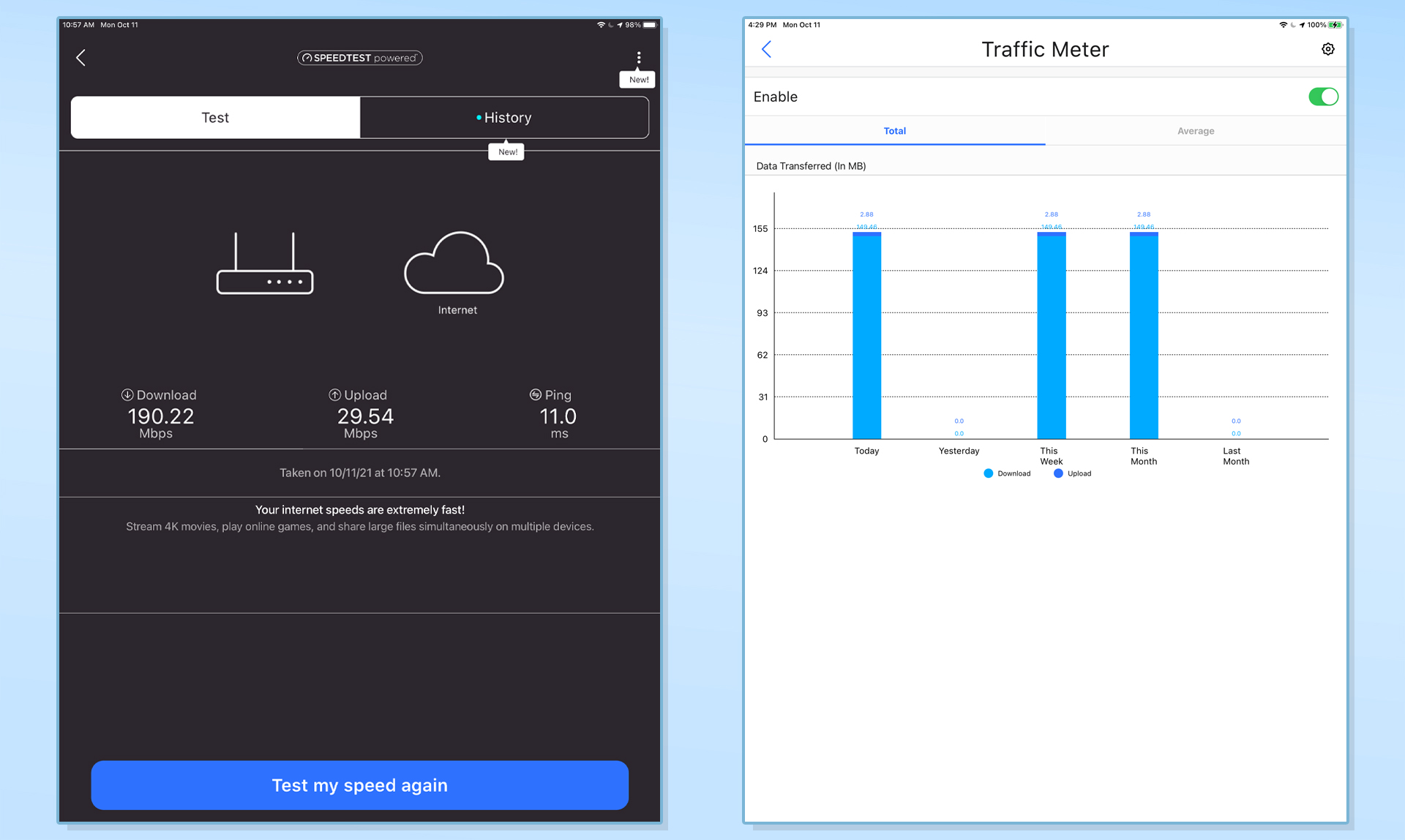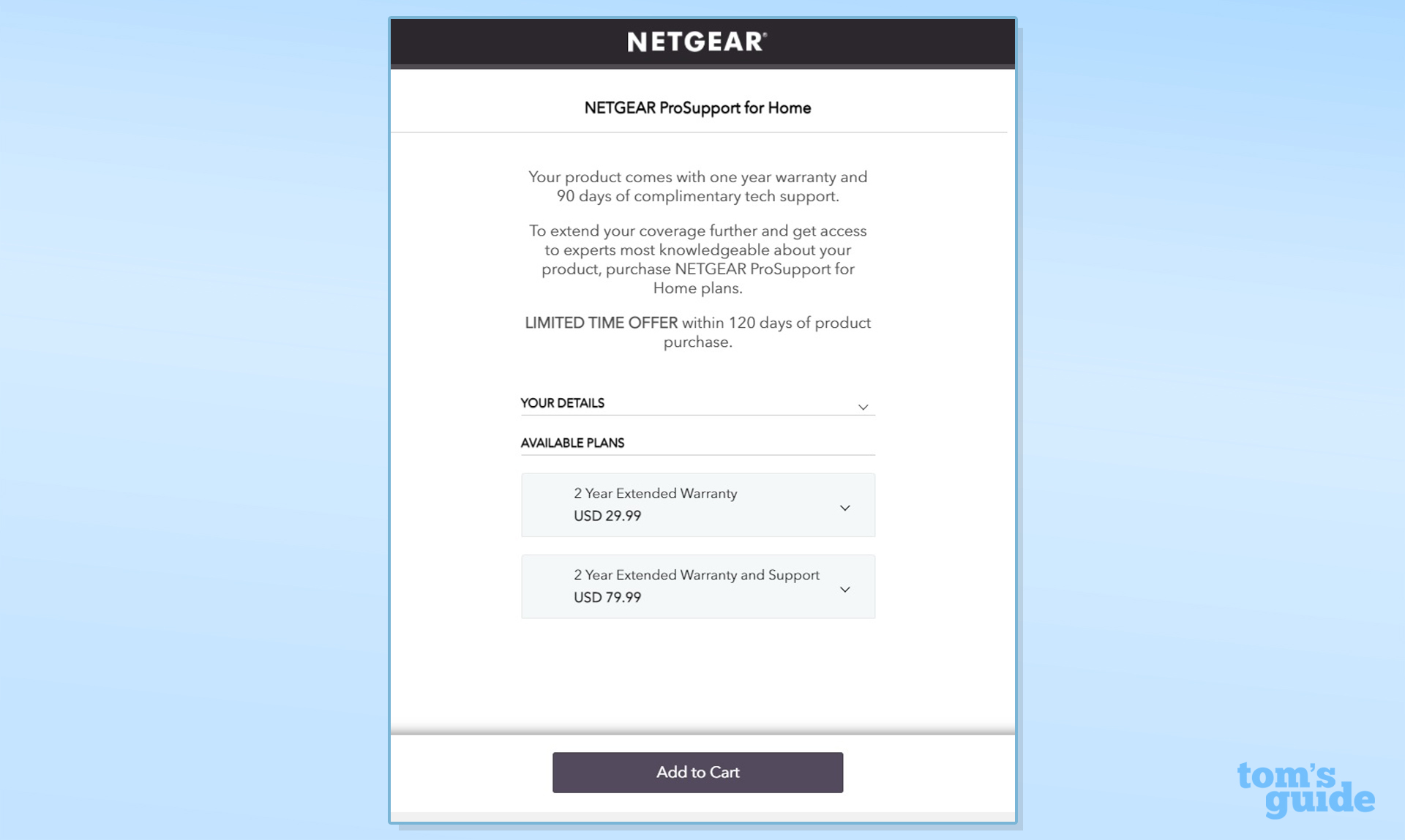Tom's Guide Verdict
An excellent way to feed data to devices close to the router, the Netgear Nighthawk AX6 (RAX50) combines 802.11AX high-speed operations with the best security enhancements that any home networking device includes. Unfortunately, it costs a lot more than other AX routers to get and use.
Pros
- +
Excellent close-up performance
- +
Security upgrade
- +
Quick setup
- +
Customization potential
Cons
- -
Expensive
- -
Security subscription lasts one month
- -
Support lasts 90-days
Why you can trust Tom's Guide
Wi-Fi spec: 802.11ax/dual-band
Number of antennas/removable: 4/Yes
Ports: 1 WAN, 4 LAN, USB 3.0
Processor: triple-core 1.5 GHz
Memory/storage: 512MB/256MB
Wi-Fi chip: Broadcom BCM6750
Size: 14.0 x 8.6 x 2.7 inches
Peak 802.11ac performance: 1.38Gbps (at 15 feet)
Range: 85 feet
Estimated Annual Electricity Cost: $8.50
Price: $250
The Netgear Nighthawk RAX50 shows that high-speed Internet can be used safely, pairing best-in-class home network security with speeds that break through the 1 Gbps barrier. Good for anything from online gamers to high-end media consumers, the RAX50’s second generation Armor software can help make your network and devices more airtight by stopping malware before it does any damage and keeping your personal data from leaking out. Quick and easy to set up, the RAX50 offers a wide variety of customization options as well as the choice between using a visually appealing mobile app or a more thorough connected browser.
On the downside, the RAX50 is one of the most expensive traditional routers you can get and it doesn’t stop with the purchase price. That’s because the included Armor 2.0 security software is a subscription service with a 30-day trial and the support only lasts 90-days, potentially costing more for these subscriptions than the initial outlay over the router’s life.
Still, our Netgear Nighthawk RAX50 review shows that top speed and top security go hand in hand with the RAX50, making it one of the best routers for security-minded homes.
Netgear Nighthawk AX6 review: Cost and what’s included
The Netgear Nighthawk RAX50 has a list price of $300 but if you shop around, it can be had for $250. This is about what the TP-Link Archer AX6000 costs. Unfortunately, that’s double what the lower-performing Linksys MR7350 goes for.
In addition to the expected router, AC adapter, Cat 6 cable and a start-up card, the RAX50 comes ready to securely fill a home with wireless data using Netgear’s Armor 2.0 security software. On the downside, the included service is actually a 30-day trial of the subscription service (more on that below).
Netgear Nighthawk AX6 RAX50 review: Design
The jet black Nighthawk RAX50 has a rectangular case, curved top and several gem-like facets. At 14.0 x 8.6 x 2.7, it should be able to fit on a desk, window sill or countertop. It’s in between the larger Netgear Nighthawk RAXE500 and slightly smaller TP-Link Archer AX6000. With its four adjustable antennas raised the device is 5.5 inches taller.
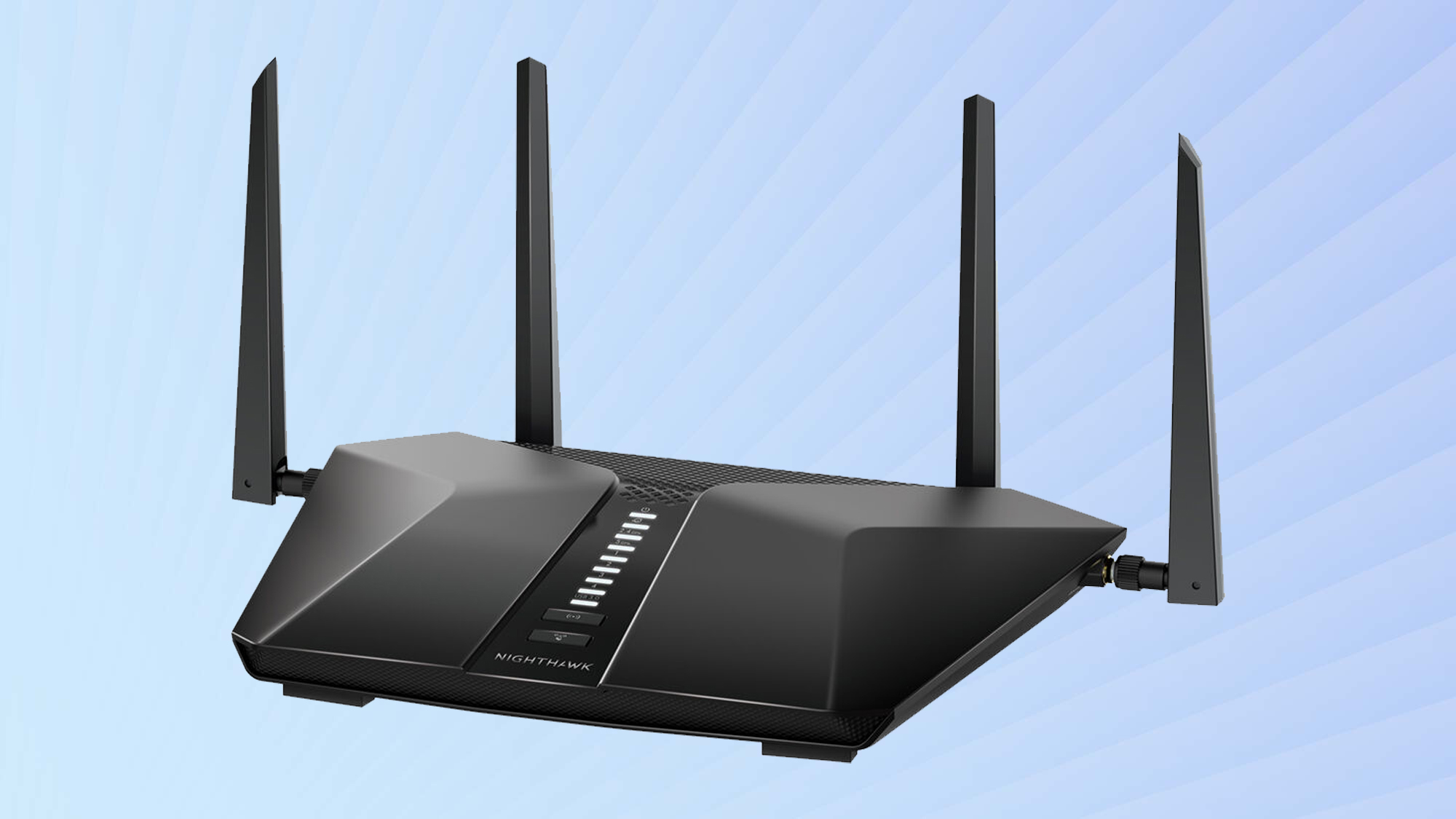
A “V” shaped ventilation grille on top and the router's passive cooling stand in contrast to the Netegar RAXE500’s cooling fan and the TP-Link AX6000’s aggressive slat vents. That said, the RAX50 never broke a sweat at a peak temperature of 99 degrees Fahrenheit, much cooler than the Netgear RAXE500’s 112 degrees F.
Get instant access to breaking news, the hottest reviews, great deals and helpful tips.
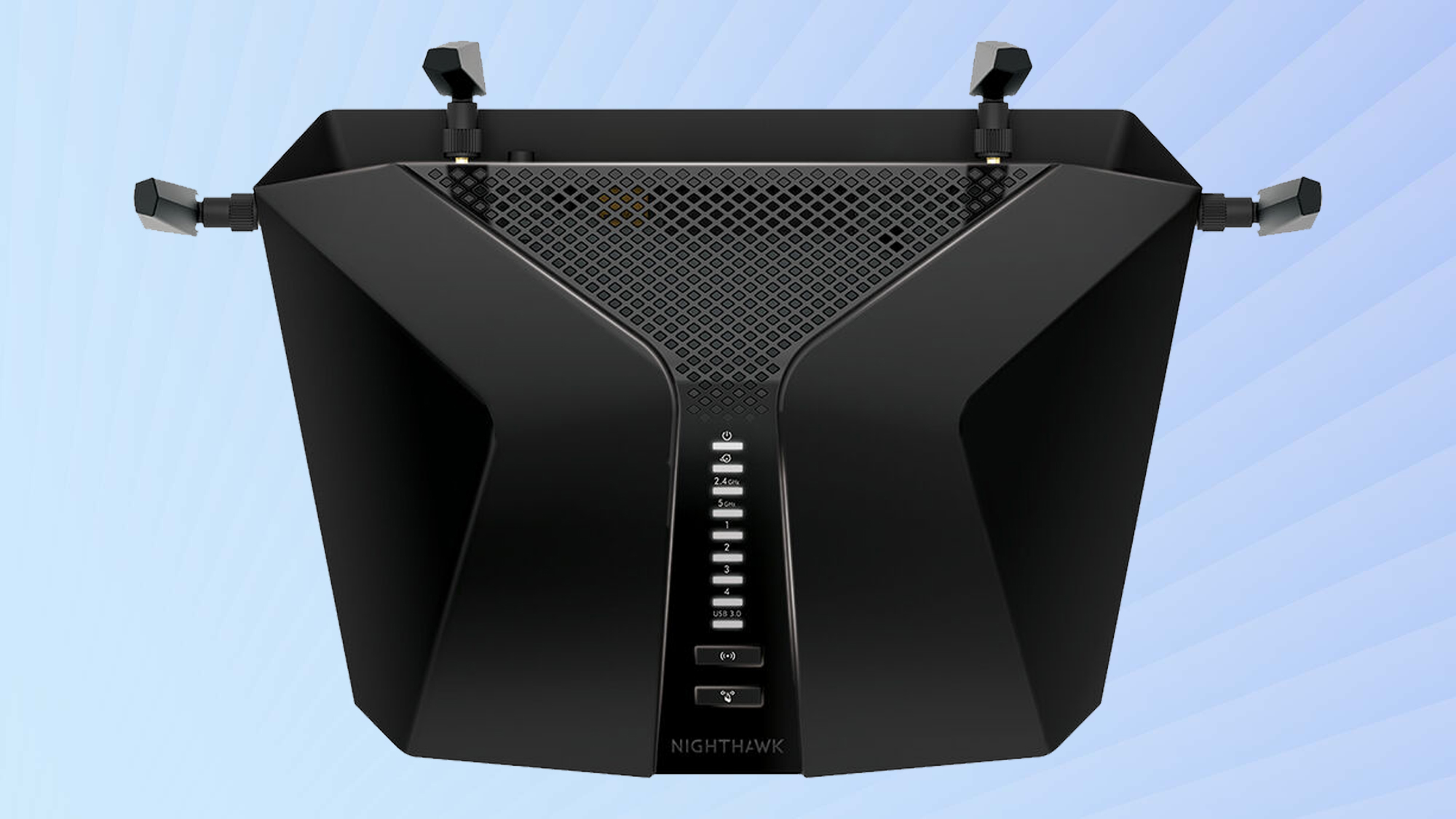
With individual LED lights for power, Internet, 2.4- and 5GHz activity, Ethernet and its USB 3.0 port, the RAX50 can light up like a Christmas tree when active. By contrast, the Linksys MR7350 has a single, discreet light bar that shows its overall status but less detailed information. By digging into the setup screens, I was able to turn the LEDs off.
Inside, the RAX50’s dual-band design uses the latest 802.11AX (Wi-Fi 6) protocol to push data to the limit. Its abilities range from MU-MIMO (for servicing many devices) to beamforming (for tailoring the signal to suit the device) to full 1024QAM operations (for top speed operations). The router can support several 160MHz high-performance data channels and can move 600Mbps over its 2.4GHz band as well as 4.8Gbps over the 5GHz band. It adds up to an AX5400 rating. That blows away the TP-Link MR7350’s AX1800 throughput rating but is behind the Netgear RAXE500’s AX1100 rating.
It’s all built around Broadcom’s BCM6750 Wi-Fi chipset that can service up to 25 devices at once. Capable of moving six individual streams of data, the router has a 1.5GHz triple-core processor, 512MB of RAM and 256MB of flash storage for the system’s settings and firmware. Unlike several of its competitors, the RAX50 can’t be set up in an Orbi mesh arrangement but can operate as a wired access point.
The RAX50’s connection panel has more than the basics with an input WAN port capable of using 5Gbps streams from a broadband modem. There are four downstream Ethernet ports that can deliver gigabit per second data, but none can be aggregated for higher performance. The TP-Link MR7350, by comparison, can pair any two of its Ethernet ports for top speed.
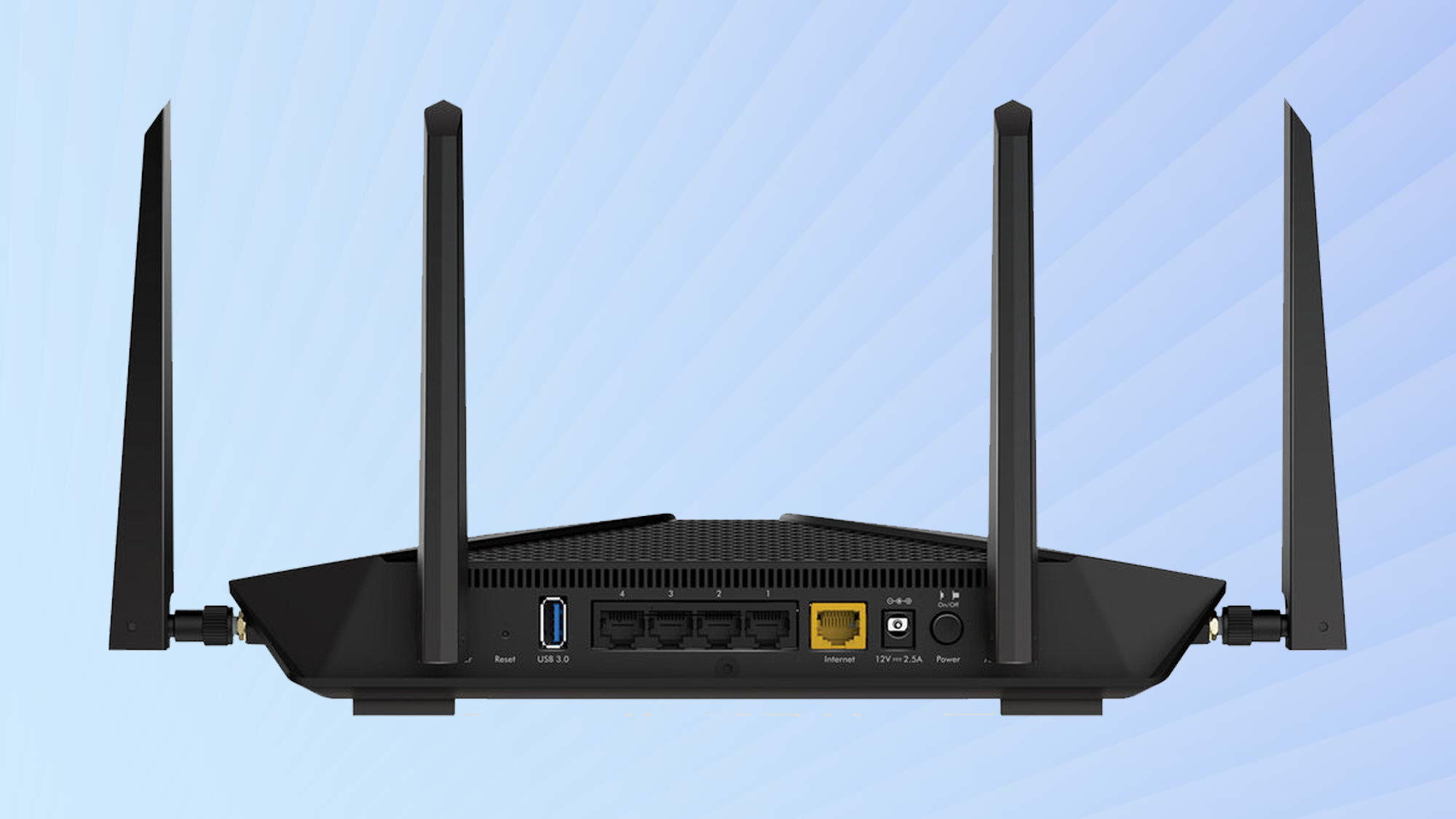
If you want to add external storage to the mix, the RAX50 has a USB 3.0 port. Just plug in an external hard drive or a flash drive to share its contents across the network using Netgear’s ReadyShare software.
In addition to buttons for power and resetting the router to its factory settings in the back, the RAX50 has keys up front for turning the router’s Wi-Fi transmissions on or off and starting the Wi-Fi Protected Setup (WPS) process for quickly adding devices.
Netgear Nighthawk AX6 (RAX50) review: Security
While the RAX50 matches most recent Wi-Fi routers with the ability to use WPA2 or WPA3 encryption, two-factor authentication and Apple’s Touch ID, it goes several steps further with its second-generation Armor package of security enhancements. The Armor 2.0 package pushes more of the malware detection and eradication to the cloud while providing a layered approach to defending a family’s computers.
Armor’s defenses range from behavioral monitoring and machine learning to local scanning for malware with apps for Windows, Macs and Android systems. It can even protect against attacks on smart devices throughout the house, like thermostats and video cameras.
No other router company offers this extensive array of security measures but it doesn’t come cheap. The RAX 50’s Armor 2.0 software is a 30-day trial. After that, the subscription costs $100 a year, but Netgear won’t leave you high and dry if you don’t pay up. The Armor software will continue to provide protection against Web attacks but won’t defend against things like Brute Force and Denial of Service attacks as well as guard your personal information.
It adds up quickly, with the cost of maintaining Armor 2.0 surpassing the initial cost of the router sometime in its third year. Still, it provides malware protection for an unlimited number of devices, making it a bargain.
The Armor subscription also provides access to Bitdefender’s VPN service. On the downside, the basic service is limited to 200MB a day of data flow per device. Upgrading to unlimited VPN use costs an additional $50 a year.
In addition to an overall security score and help raising it, Armor now has enhanced protection with anomaly detection that looks for abnormal device behavior. It protects against brute force attacks from bots and defend against new exploits as well as denial of service attacks.
Perhaps the biggest upgrade is Armor 2.0’s protection of your sensitive data. The software monitors the data entering and leaving the router for indications your social security number, credit card accounts and other personal data are leaking out. This can potentially save your online identity from being compromised.
Netgear Nighthawk AX6 (RAX50) review: Performance
The Netgear Nighthawk RAX50 is one of the first AX routers to make the most of the high-performance Wi-Fi 6 protocol. Over a week of daily use, it was reliable for things little (email and online shopping) and big (distributing 4K videos and online gaming).
In my 100 year old house, the RAX50 excelled at delivering lots of data when it was close to the Samsung Galaxy Book Pro test system. Using Ixia’s ixChariot network benchmark software, the test system registered 1.38Gbps of data flow with the software simulating 10 data hungry clients. That might not be able to touch the 2.39Gbps that its older brother, the 802.11AXE-based Netgear RAXE500 router accomplished by adding a 6GHz link to its 2.4- and 5GHz bands.

Still, the RAX50’s throughput was one-third more than the TP-Link Archer AX-6000 (884.4Mbps) and the Asus RT-AX86U (929.7Mbps). It’s also nearly three times the 478.3Mbps that the AX-based Linksys MR7350 achieved.
The router’s available bandwidth fell off sharply when I moved it to a distance of 50-feet. At this point, its throughput dropped to 133.2Mbps, putting it well behind the RT-AX86U (285.3Mbps) and the Linksys MR7350 (167.2Mbps). This makes the RAX50 more useful for same-room or adjacent-room coverage.
With the distance increased to 75-feet, the RAX50 could move only 9.79Mbps. That’s compared to the likes of the RT-86U’s 250.1Mbps and the TP-Link Archer AX6000’s 149.9Mbps. The Linksys MR7350’s 15.3Mbps was closer to the RAX50’s mark. The RAX50 had a range of 85 feet, matching that of the TP-Link but short of the Linksys’s ability to push a signal to 90 feet.
A Wi-Fi screamer, the RAX50 pushed 1.01Gbps through a wall 20 feet from the router. This was one-quarter better than the TP-Link Archer AX6000 (744.7Mbps) and 60 percent ahead of the Linksys MR7350 (408.8Mbps). When it came to connecting the router with the test machine set up a floor above, the RAX50 moved 748.1Mbps of data, more than double the Linksys’s 312.3Mbps and ahead of the TP-Link’s 671.4Mbps.
The RAX50 passed our informal saturation test where the router distributed data to support viewing videos on an iPad Pro, listening to an Internet radio station on a Samsung Galaxy S7+ tablet while streaming a 4K movie on a Dell XPS 15 as data was being read and saved to a RAID file server with a Lenovo ThinkPad T470. The video and sound were skip free with neither freeze-up, drop-outs or artifacts.
At 7.4 watts of power, the RAX50 is a miser but still uses more than the Linksys MR7350’s 5 watts of power. If it’s left on 24/7 and you pay the national average of 13 cents per kilowatt hour, the RAX50 should cost about $8.50 a year. Others, like the TP-Link Archer AX6000 and Netgear Nighthawk RAXE500 can cost as much as $11.30 and $13.70, respectively, per year to use.
Netgear Nighthawk AX6 RAX50 review: Setup
Getting the Nighthawk RAX50 online can be accomplished either with the Nighthawk app for iPhones and iPads or Androids or with a connected browser. I chose the latter option. The routine started with me screwing in the unit’s four antennas, connecting the router to my broadband modem and plugging in the AC adapter.
After creating a Netgear account, I connected my test system with the router using the randomized Wi-Fi name and password printed underneath. Before any configuration took place, the router insisted on changing its IP address to 10.0.0.1.
It then checked the Internet connection and asked me to enter an administrative password. Then, I answered two verification questions if I lost the password.
Finally, I renamed the router and added a personalized passcode and registered the hardware online. It connected on the first try and yielded 181Mbps of data from my 200Mbps connection and took all of 5 minutes to go from a sealed box to a fully operating dual-band home network.
My next task was to set up the Armor security system. Using my iPad Pro, the process started with me activating the one-month Armor trial.
Once the software was live, Armor gave me an embarrassing security rating of 77 out of 100. It listed the items that needed to be changed, like installing the included Bitdefender security software on my devices.
Next up, I created profiles for my children to screen out the worst the Web could throw at them. Then, I set limits on their screen time.
Netgear Nighthawk AX6 (RAX50) review: Configuration
Like other Nighthawk routers, the RAX50 can be configured using a connected browser for lots of options or via its Android or iOS apps, which is more visual but less complete.
Either way, the main pages offer a good overview of the router’s setup and current duties. While the browser approach shows the Internet status, how many devices are connected and a ticker of the network’s name and passcode, the apps add how much time remains on the Armor subscription and the status of the Parental Controls.
Both offer a speed reading of the network’s performance and there’s a Traffic Meter that shows the overall data flow for help in reducing interference. At any point, limits can be placed on downloads, uploads or both.
On the other hand, the browser let you customize a variety of performance parameters not included with the app, such as Fragmentation Length, Long or Short Preamble and the ability to turn the WiFi transmissions on or off according to a schedule.
[[rax50 preamble]]
Like its competitors, the RAX50 comes with a one-year warranty but it can be doubled for a reasonable $30. Netgear provides 90-days of personalized support, although the Web site has lots of self-serve items on the product support page. Two years of support and a warranty extension sells for $80.
The downloadable manual is a must-read because the RAX50 can do so much to turbocharge a home network.
Netgear Nighthawk AX6 RAX50 review: Verdict
By combining a fast Wi-Fi 6 router with some of the most effective security software, Netgear has created one of the best routers on the market. The Nighthawk RAX50 can not only satisfy a family’s thirst for data but keep them safe at the same time. It is also one of the most customizable routers on the market so that it can be tuned to the environment and use.
With a suggested price of $300, the RAX50 can be had for $250 if you shop around. That’s twice the price tag of the lower-performing Linksys MR7350 but half that of the Linksys Hydra 6E or Netgear Nighthawk RAXE500, which use the newer Wi-Fi 6e protocol that pushes performance by adding 6GHz transmissions. It’s the router to get if you care as much as online safety as you do about Wi-Fi performance. The RAX50 checks both boxes.
Brian Nadel is a freelance writer and editor who specializes in technology reporting and reviewing. He works out of the suburban New York City area and has covered topics from nuclear power plants and Wi-Fi routers to cars and tablets. The former editor-in-chief of Mobile Computing and Communications, Nadel is the recipient of the TransPacific Writing Award.
